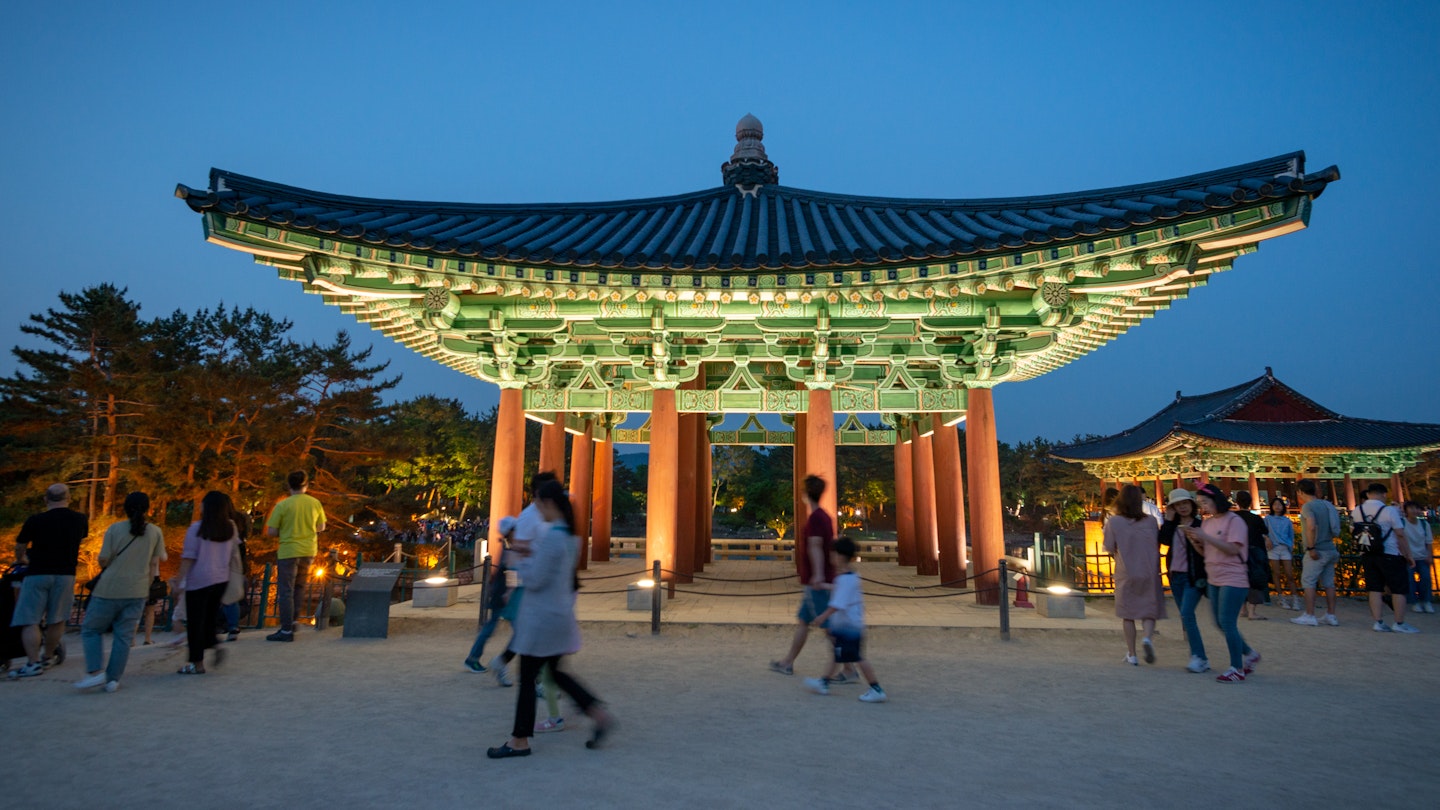Once the capital seat for over a thousand years of the ancient Silla Kingdom, Gyeongju has long remained an important center of history and culture, and continues to be a top destination for family vacations and educational school field trips.
However, in the past decade, the city has undergone an exciting transformation. Technology and an emerging generation of movers and shakers have blended the city’s long-standing traditional elements with modern-day aesthetics and trends, making it a popular city for the young and hip.
Here’s your guide to Gyeongju, covering the must-visit neighborhoods, extraordinary attractions, and a deeper dive into the increasingly diverse demographics worth exploring in this hidden gem city.
How to Reach Gyeongju from Seoul
Gyeongju is located about 276 km from Seoul, but it’s easily accessible via KTX (Korea’s high-speed train) trains (about 2 hours), regular trains (about 3 hours), and buses (a bit longer than 4 hours). The ample transportation options make Gyeongju a favorite for travelers looking to explore outside Korea’s capital, regardless of their budget or the amount of time they wish to spend in this city.
The Buzzing Hwangridangil Neighborhood
The area south of the major Taejong-ro (or Taejong Street) is where many of Gyeongju’s famous historic sites such as Wolji Pond and the Gyeongju National Museum are found. However, just west of the Daereungwon Tomb Complex lies the mega-popular Hwangridangil neighborhood, where many picturesque hanok (traditional Korean houses) have been transformed into chic and social media-worthy cafes, restaurants, and shops. This neighborhood, with its charm and unique vibe, attracts visitors looking to experience Gyeongju’s fusion of tradition and modernity.
Moreover, this popular neighborhood stretches across both sides of Poseok-ro. As you wander, you’ll notice the countless hanoks that enhance Hwangridangil’s quaint atmosphere.
In Hwangridangil, eastern and western design elements converge beautifully, allowing for experiences such as exploring the area in a rented hanbok (traditional Korean attire) or enjoying delightful desserts at trendy cafes.
The Relaxed Vibes of Gyochon Hanok Maeul
About 1 km southeast of Hwangridangil, the Gyochon Hanok Maeul offers a more traditional, quieter experience. This redeveloped traditional village, once home to the wealthy Choi Clan, provides a glimpse into the lives of noble families with its preserved heritage houses.
Visitors can spot many individuals in hanbok wandering this picturesque village, enjoying unique treats like injeolmi ice cream, enhancing their cultural experience.

Bomundanji’s Resorts and Attractions
This large-scale resort complex around the man-made Bomun Lake has been a popular center for families since the 1980s. Although located about 5 km east of the city center, Bomundanji is strategically situated roughly halfway between downtown and the Unesco World Heritage Sites of Bulguksa and Seokguram Grotto.

The surrounding attractions in this complex, like Gyeongju World (an amusement park) and Gyeongju Bird Park, cater to out-of-towners, offering other entertainment facilities such as a golf course and water park, creating a mix of experiences for every traveler type. If resort-style tourism isn’t your preference, consider renting a bike to explore the beautiful 9.2 km road around the lake, particularly stunning in early spring when cherry blossoms bloom.
Gyeongju’s Culinary Highlights
Trendy restaurants like Hwangridangil Anima and Seasoning often have lines of visitors eager to enjoy dishes, such as pasta and steak, in their unique settings. If you prefer a quick snack, local chain Gyori Gimbap, renowned for its kimbap (seaweed rolls with various fillings), is a must-try.

Furthermore, the renowned Hanwoo beef from Gyeongju’s province attracts both locals and tourists to popular eateries like Twoegeungil Sootbool Galbi for traditional Korean barbecue. Hamyangjib, operating for over 90 years, is another beloved spot, famous for its hanwoo mool hwoe, a chilled broth of beef tartar with noodles. Note that these venues may have long wait times, especially on weekends.
It is essential for travelers to stay informed about safety recommendations and restrictions, especially during a pandemic. Always check local authorities for the latest guidance before traveling.





